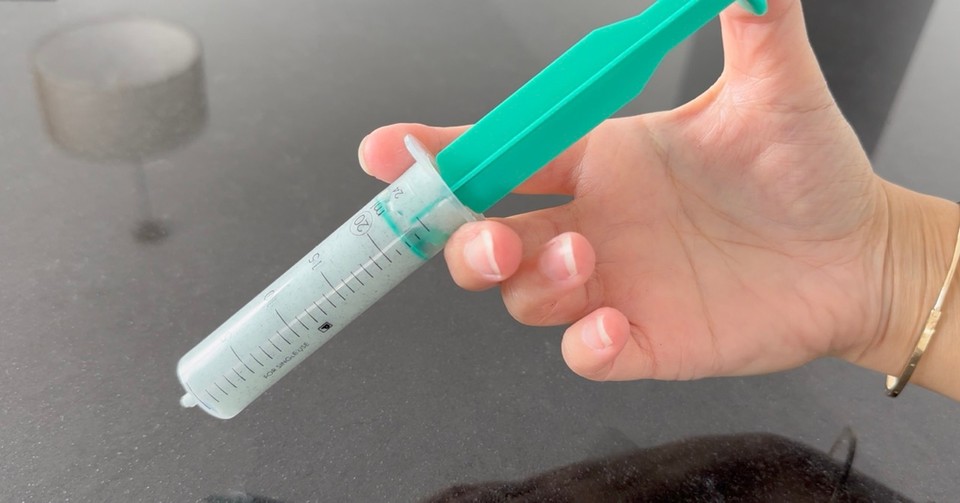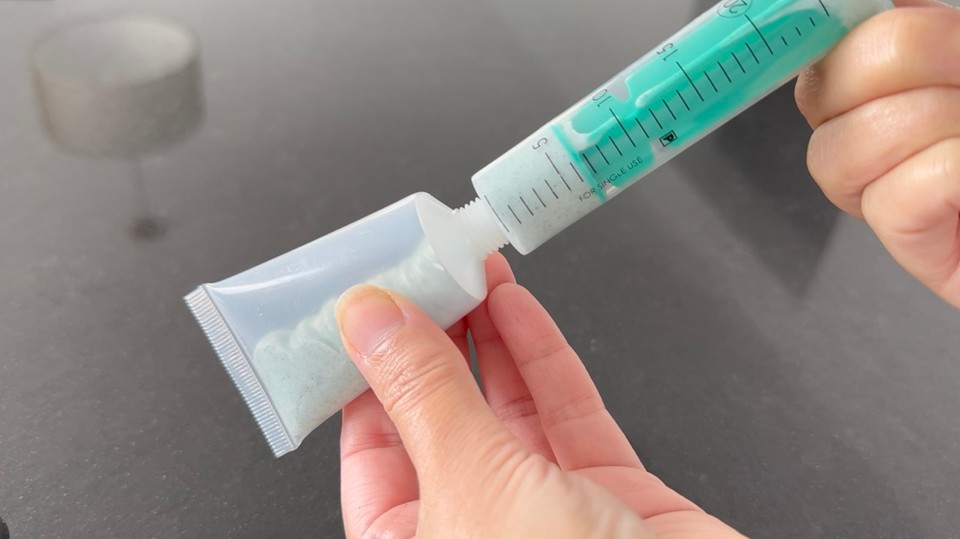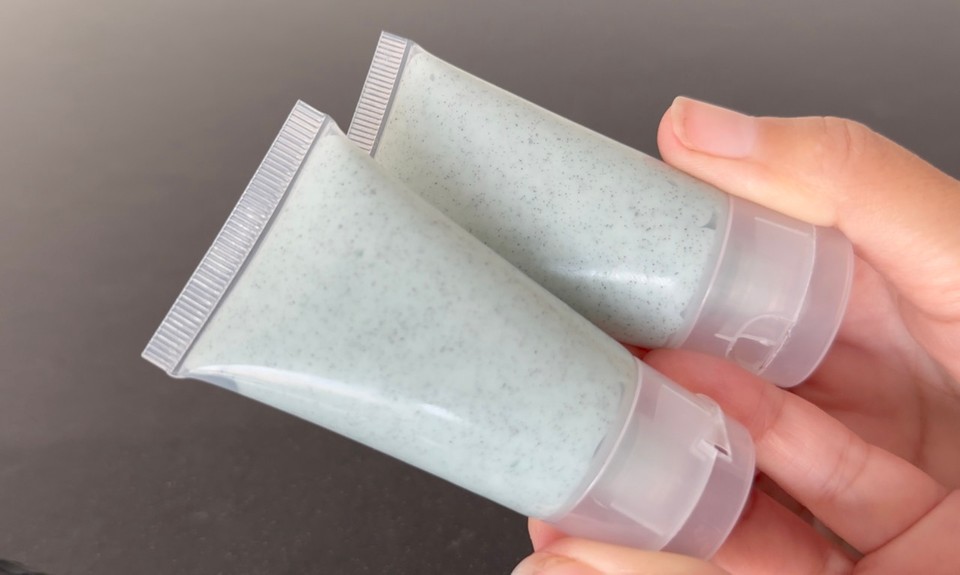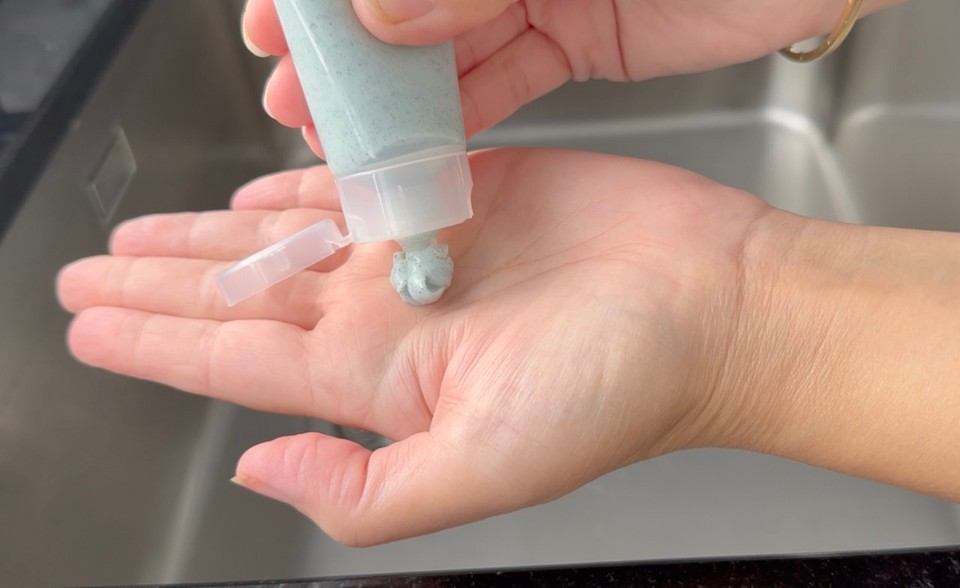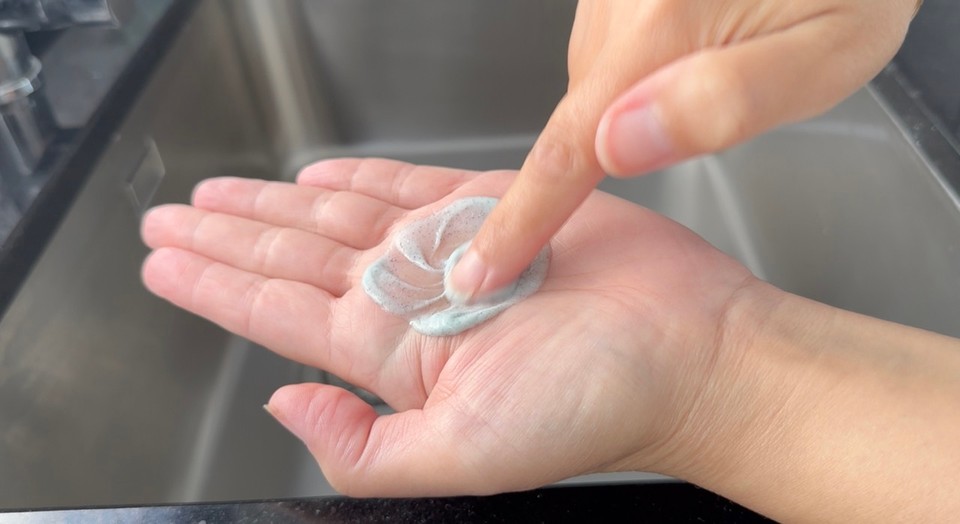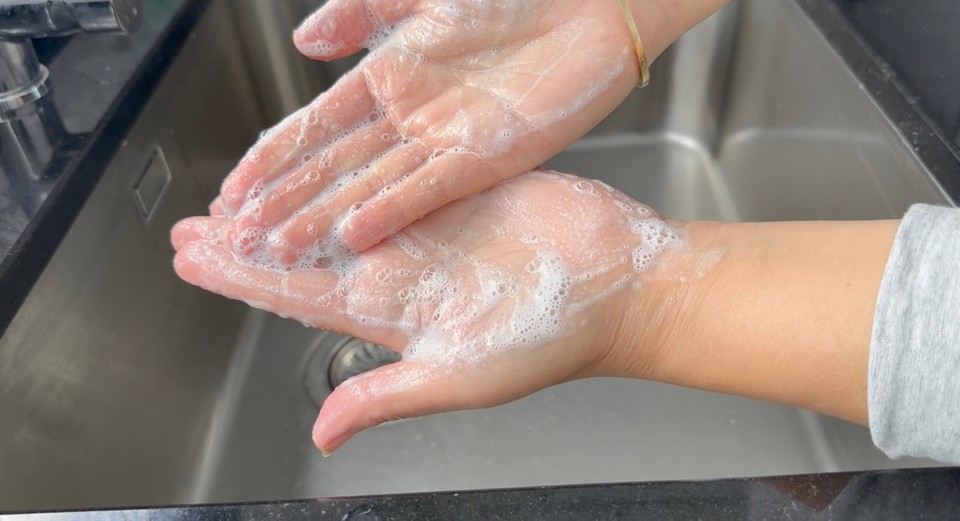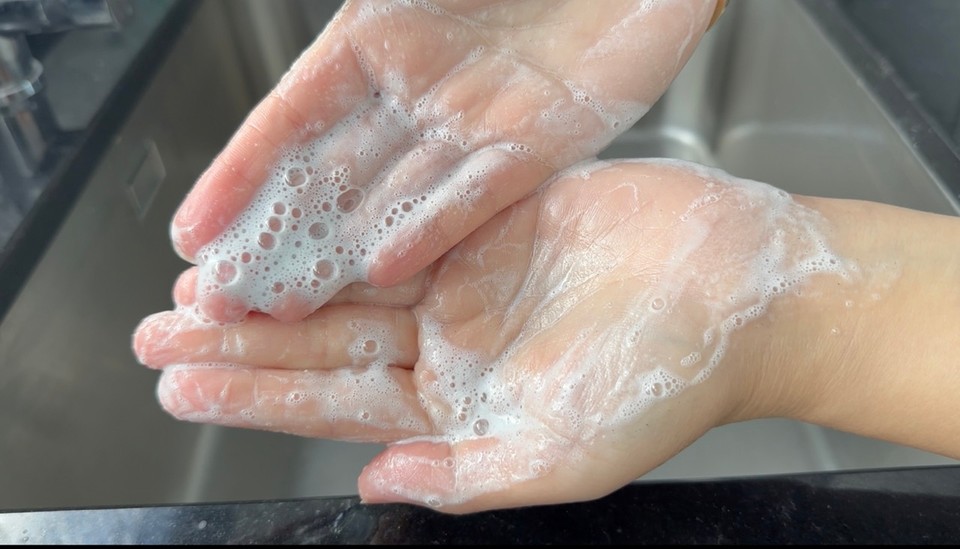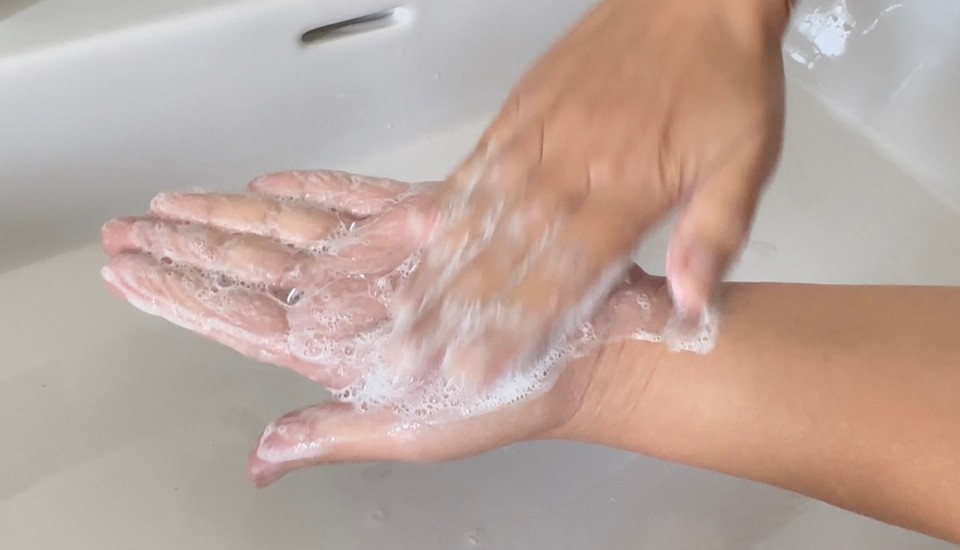Face Creamy Exfoliate Cleanser
| Phase | Ingredient | Percent (%) | Weight (g) |
|---|---|---|---|
| Phase A | Distilled water | 38.5 | 38.5 |
| Sucrose Stearate | 4 | 4 | |
| Phase B | Coco glucoside | 8 | 8 |
| Coco betaine | 7 | 7 | |
| SCI (INCI - Sodium Cocoyl Isethionate) | 15 | 15 | |
| Phase C | Coconut oil | 2.5 | 2.5 |
| Cetearyl alcohol | 3.5 | 3.5 | |
| Cherry kernel oil (INCI - Prunus Cerasus Seed Oil) | 2 | 2 | |
| Castor oil (INCI - Ricinus communis) | 2 | 2 | |
| Phase D | Glycerin | 8.2 | 8.2 |
| Betaine | 2 | 2 | |
| Citric acid | 0.5 | 0.5 | |
| Preservative Cosgard (INCI - Benzyl Alcohol, Dehydroacetic Acid, Aqua) | 0.8 | 0.8 | |
| Grape leaf extract (INCI - Glycerin - Vitis Vinifera Leaf Extract) | 3 | 3 | |
| Fragrance oil | 1 | 1 | |
| Phase E | Volcanic sand | 2 | 2 |
*** Optional: mica color
In this post, I'm sharing a face exfoliate cleanser. This product is suitable for most skin types. It is creamy and not too harsh on the skin, giving a light exfoliation and gentle cleansing.
This face exfoliate cleanser can be used every other day if you have a normal skin type. If you have sensitive skin, you need to do a patch test before using cosmetic products.
If you haven't tried this face cleanser base, you should. It is also very gentle and can be personalized to your needs and level of exfoliation.
Face exfoliation is a great way to brighten the skin and get rid of dead skin cells. This specific exfoliator is also a cleanser; you can use it before applying your moisturizer.
This formula is made of five different phases. Phase A is the distilled water with the emulsifier. Phase B contains the surfactants. Phase C is the oil phase, phase D contains some active ingredients and preservatives, while phase E is the exfoliation ingredient.
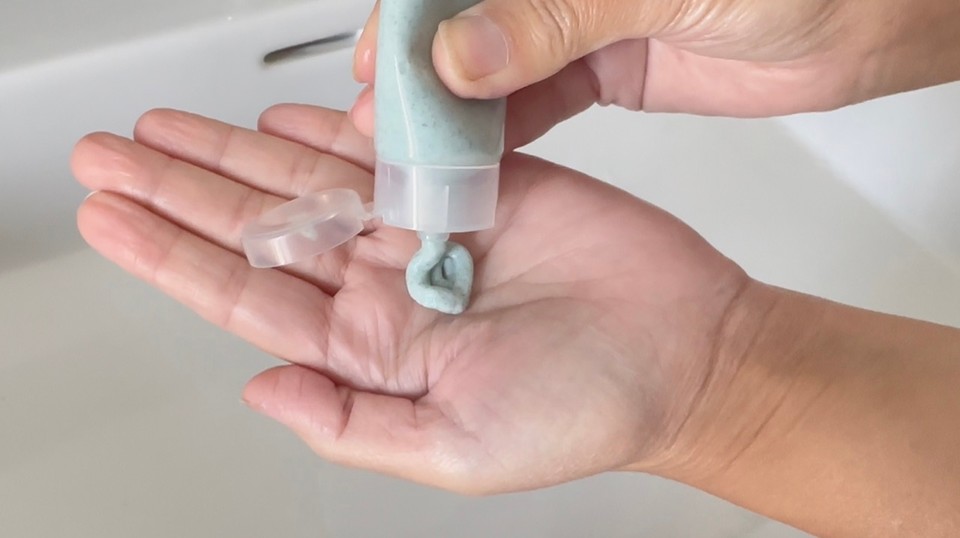
Now, I'll go over the phases and some alternatives you can use in each phase. In phase A (the water phase), I used distilled water, which you can replace with a hydrosol such as geranium, eucalyptus, rose or camomile hydrosol.
Next, I added the emulsifier. In this formula, it is Sucrose Stearate. Sucrose Stearate can be used in cold or hot emulsions. It can be added to the water phase or the oil phase. I prefer to add it to the water phase and heat it to around 60-65°C. When added to the water, it will not dissolve immediately. After heating it for 10-15 minutes, it will dissolve and create a jelly-like consistency.
In phase B, I combined three mild surfactants. I used coco glucoside and coco betaine for the liquid surfactants and SCI for the solid surfactant. If you want to use only one liquid surfactant, you can use only coco glucoside or only coco betaine, so for 100g, use a total of 15g of liquid surfactant.
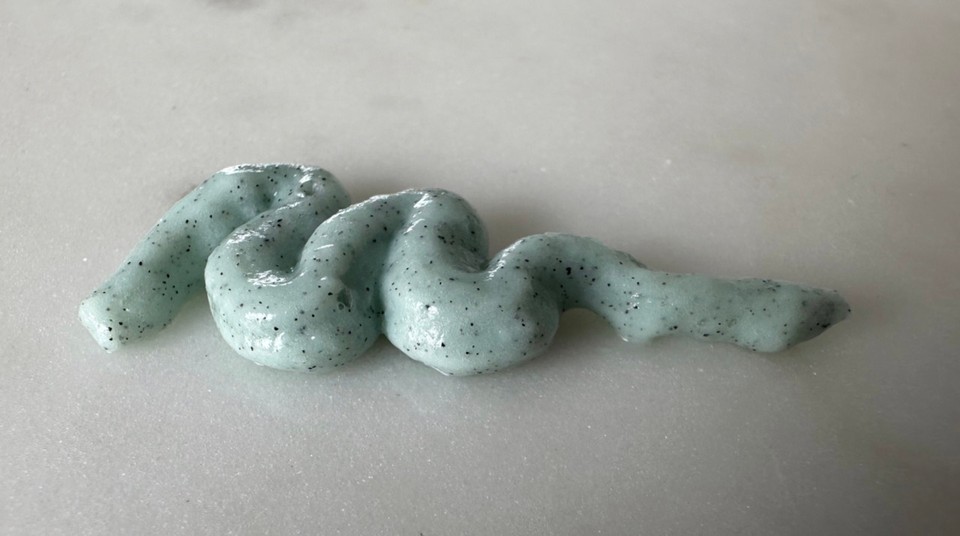
In phase C, I combined coconut oil with two carrier oils. I used Cherry kernel oil, packed with essential fatty acids, such as oleic acid and linoleic acid, renowned for their ability to nourish and moisturize the skin. It also contains antioxidants, including vitamin E, which help shield the skin from the harmful effects of free radicals. Additionally, cherry kernel oil's anti-inflammatory properties make it suitable for soothing and alleviating irritated or inflamed skin.
I also used castor oil. Castor oil can help remove makeup and clean the skin without stripping it of natural oils, as well as having anti-inflammatory properties that help calm and soothe irritated or inflamed skin.
You can replace these oils with other oils such as sweet almonds, jojoba, hemp, safflower, sunflower, or rice bran.
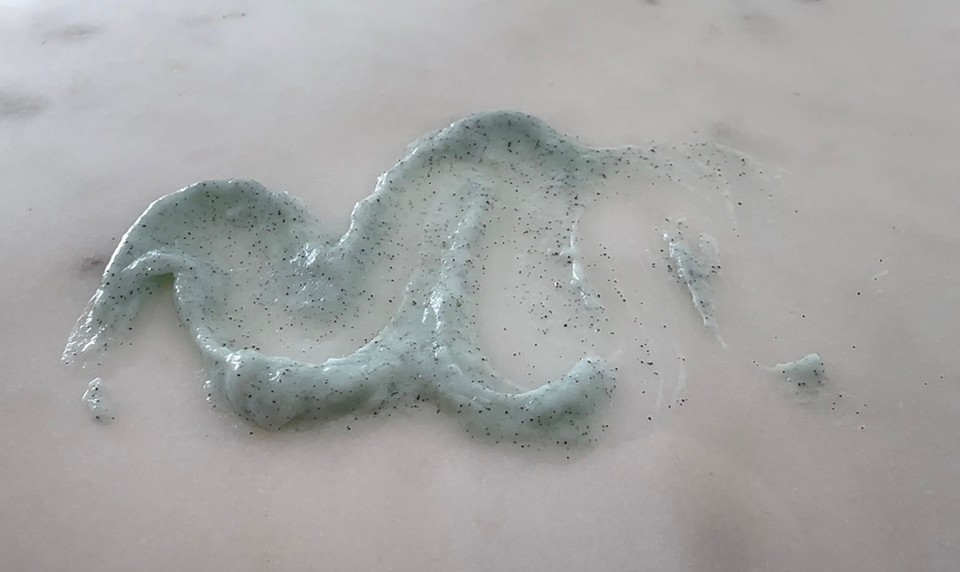
In phase C, I also added Cetearyl alcohol. Cetearyl alcohol acts as a co-emulsifier and adds to the texture and consistency of the cleanser, giving it a creamy and smooth feel. If you want to replace it, you can use cetyl alcohol.
In phase D, I mixed glycerin with betaine and citric acid. Betaine, a natural humectant, helps hydrate and lock in moisture like glycerin. Betaine has soothing and anti-inflammatory properties. Betaine is most effective in formulations with a pH between 4 and 6. Some anionic surfactants can not be combined with betaine, but SCI is a very mild surfactant, unlike sodium lauryl sulfate (SLS).
You can replace the betaine with Panthenol (Provitamin B5), Cucumber extract, Aloe vera extract, Green tea extract or Calendula extract.
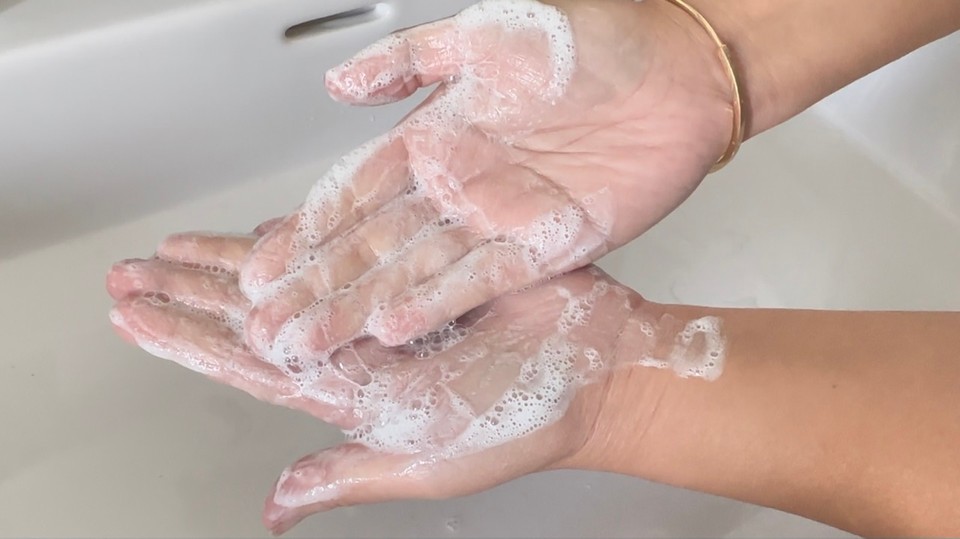
I used citric acid in phase C. Citric acid has natural exfoliating properties and contains antioxidants, such as vitamin C, which can help protect the skin from free radical damage. Citric acid is used to lower the product's PH to around 5.5. To read more about PH adjustments in cosmetics, check this post.
For my preservative, I used Cosgard. If you are using a different preservative, check the usage rate according to the supplier's instructions. If you need to increase the percentage of your chosen preservative, you can reduce the amount of distilled water or vice versa.
I also added Grape leaf extract to phase D. Grape leaf extract is rich in antioxidants (the antioxidants in grape leaf extract can help brighten the complexion by reducing the appearance of dark spots). Grape leaf extract may have mild astringent properties, which can help tighten the skin and minimize the appearance of pores.

You can use another extract such as Green tea, Chamomile, Liquorice root, or berry extract. If you want, skip the extract and add the amount to the distilled water in phase A.
I added eucalyptus fragrance, which you can change to another scent you like. You can use essential oil instead. Ensure the fragrance or essential oil you use is skin-safe, and use the dose recommended by the supplier.
Lastly, I added volcanic sand as this cleanser's exfoliator in phase D.
The abrasive texture of volcanic sand enables it to penetrate deep into pores, effectively dislodging and eliminating debris contributing to clogged pores.
You can use a different exfoliating agent, such as Jojoba beads, Bamboo powder, Rice bran powder, Ground oatmeal, or pumice powder.
If you check the formula for a base face cleanser, I added more exfoliation ingredients as options for face cleanser.
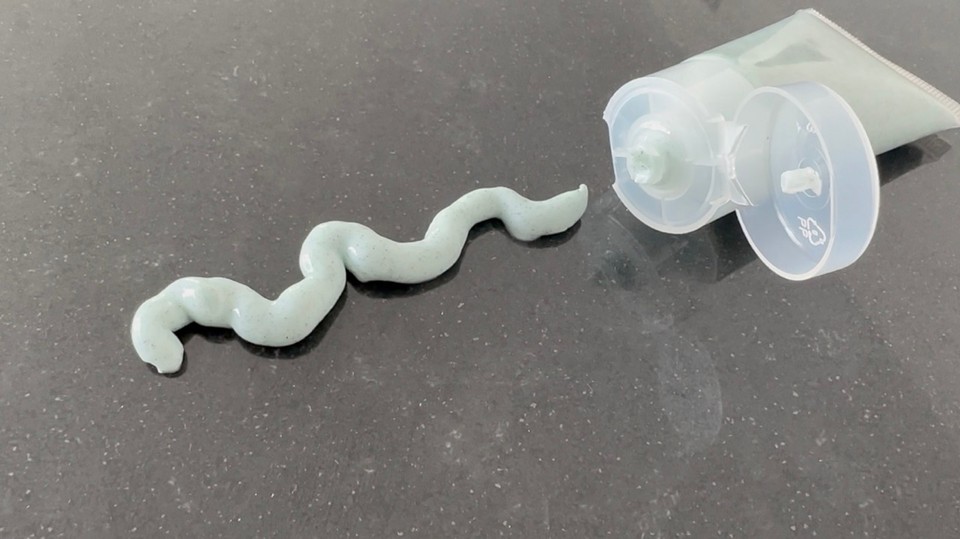
If you wish to have a little color in this face exfoliate cleanser, add mica color. I added a light turquoise color. This color compliments the scent I chose for my cleanser.
You can also use an infused oil to add natural color to the product. Read here on infusing oils with the cold method.
You can store this product in a plastic jar or tube container. If you want to use a tube container, you will need a syringe to insert the product into the tube.
Use the calculator to adjust the amount you wish to make.
Method:
- In a heat-resistance container, add the distilled water and the Sucrose Stearate.
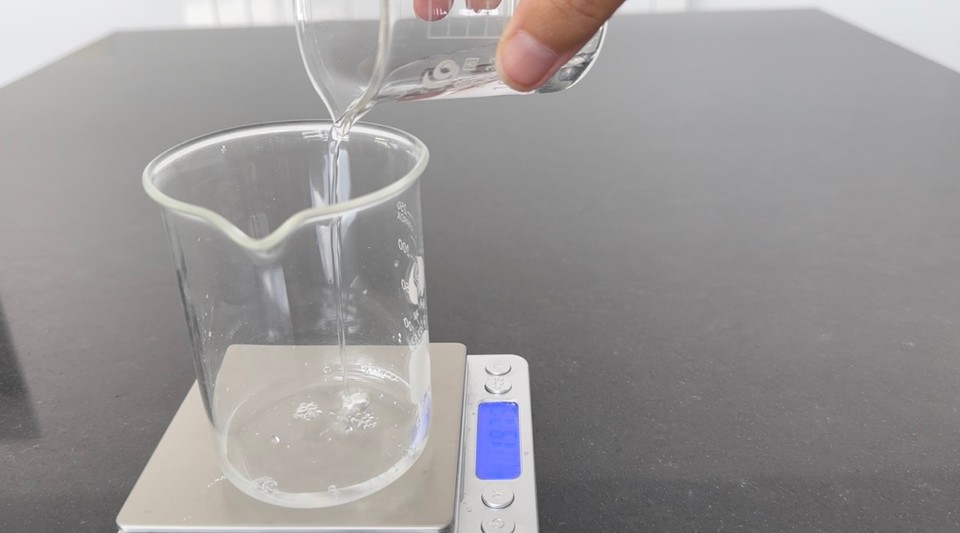
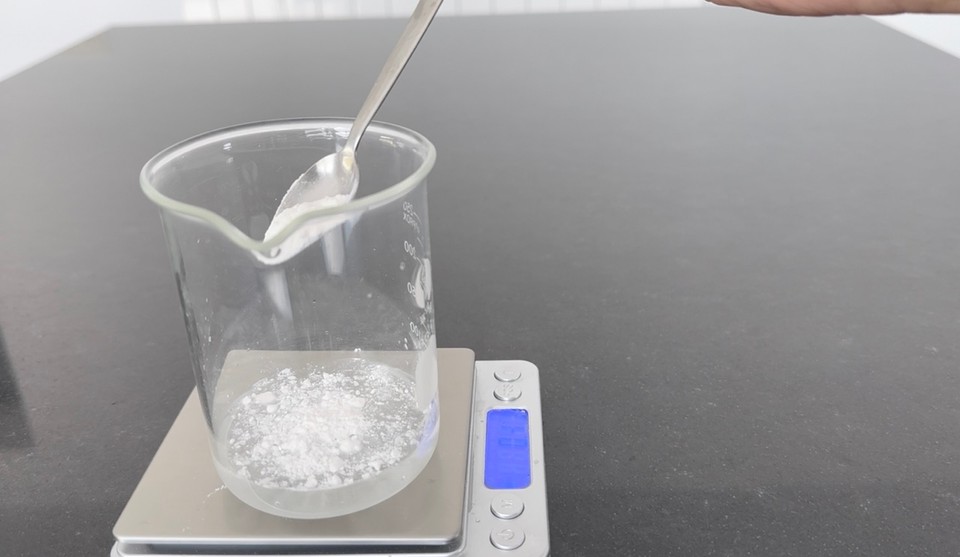
- Add Phase C ingredients in another heat resistance container, and stir a little before and while heating.
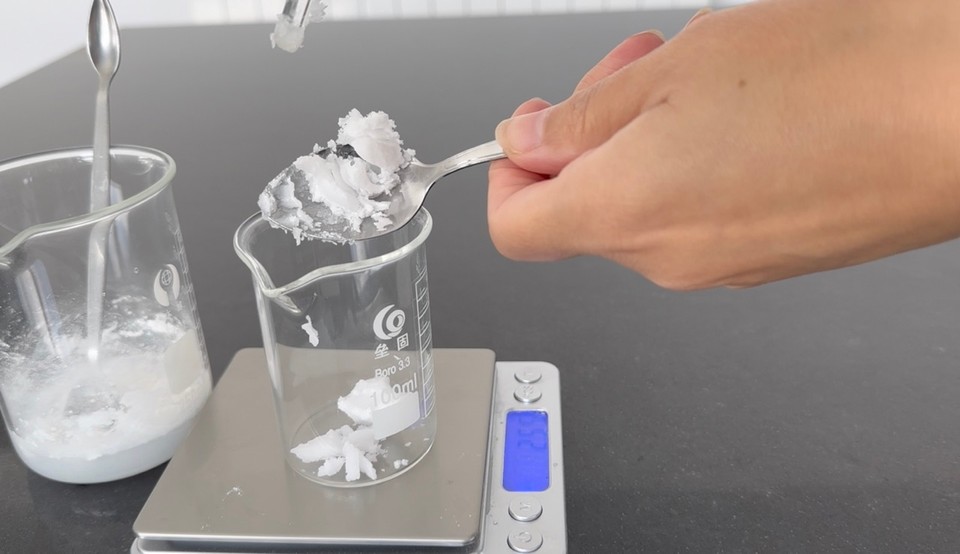
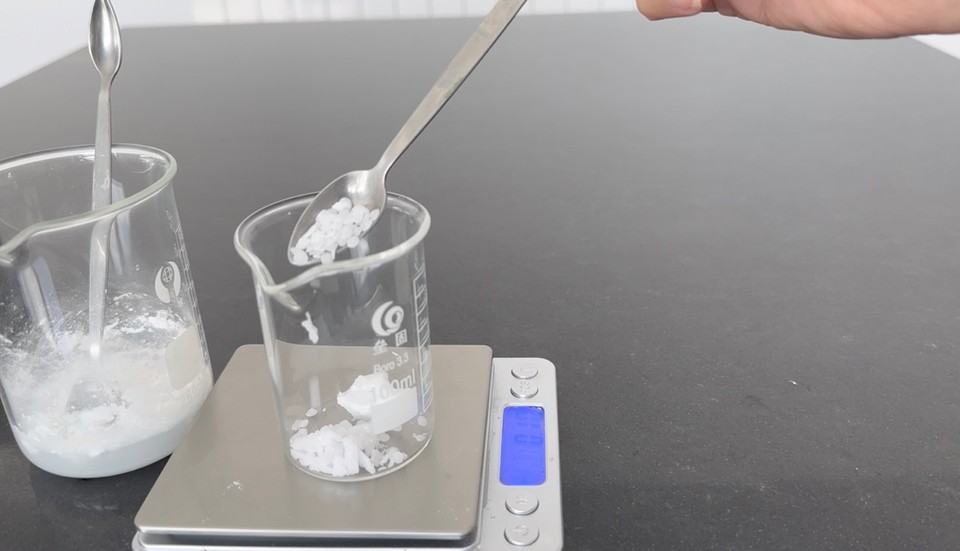
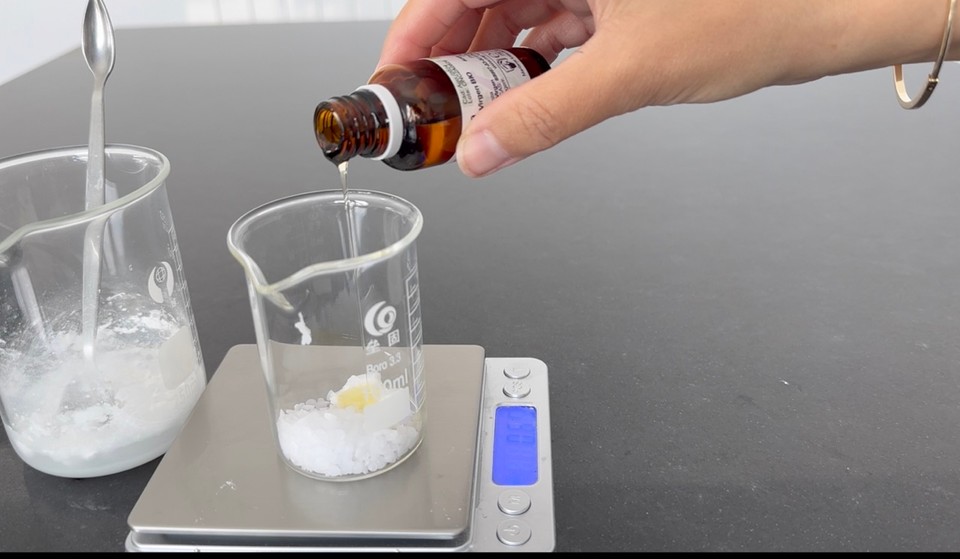
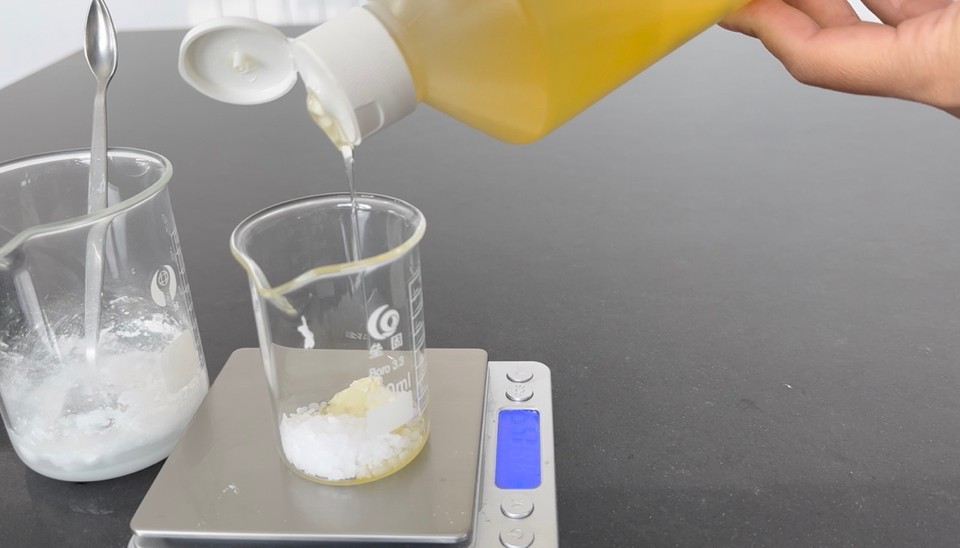
- In a third heat-resistance container, add phase B ingredients.
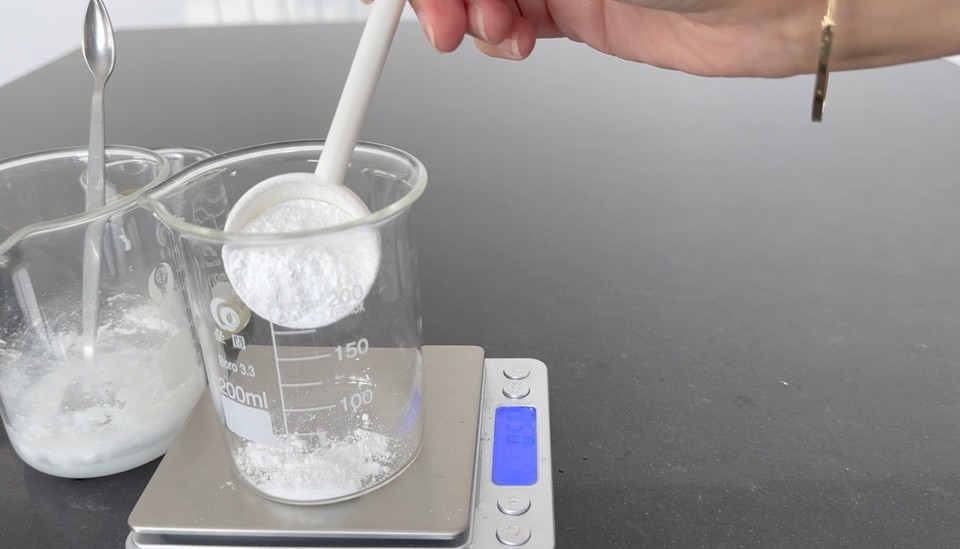
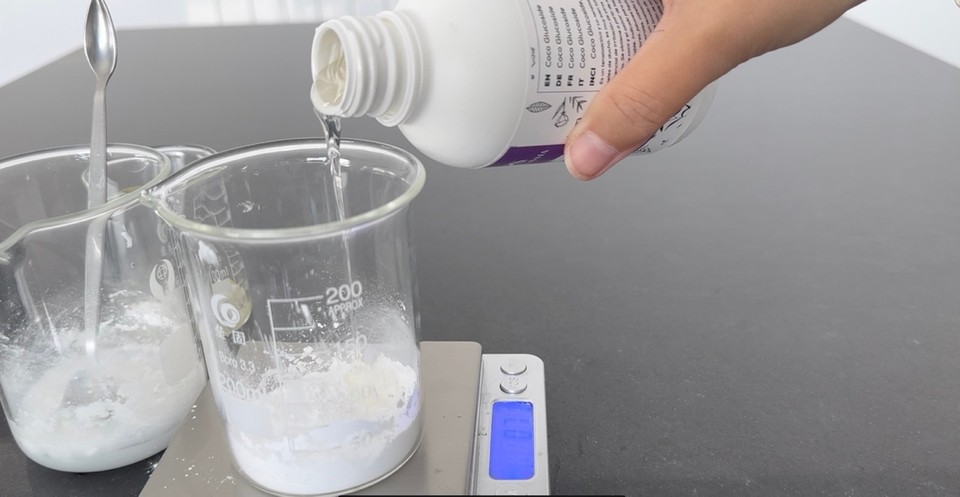
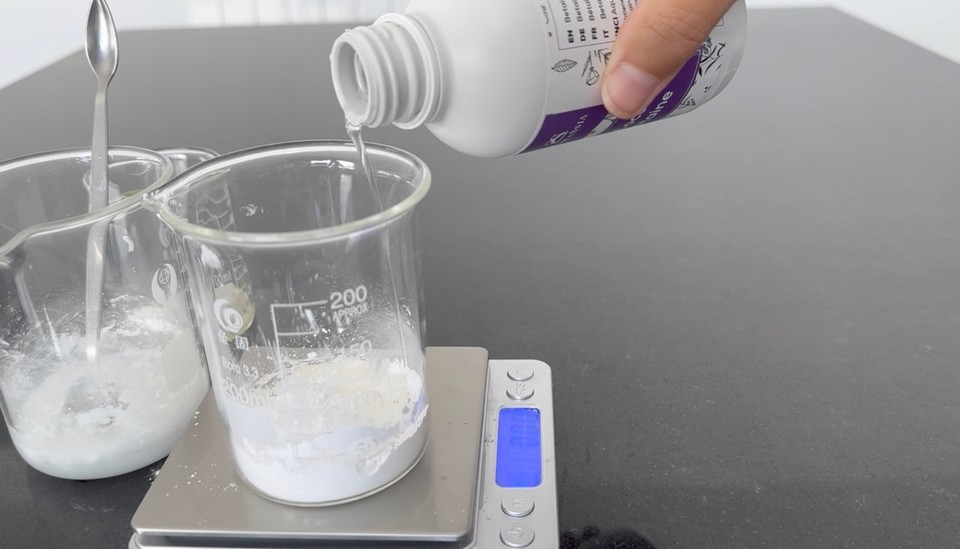
- Place phases A, B and C into a double boiler around 60-65°C.
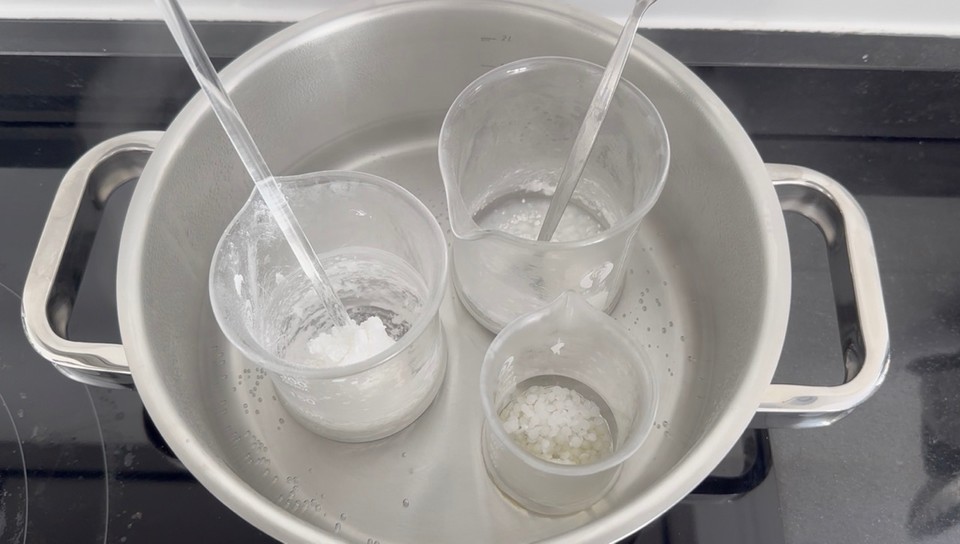
- Prepare phase D. In a different container, add all the ingredients from phase D and mix to dissolve the powders.
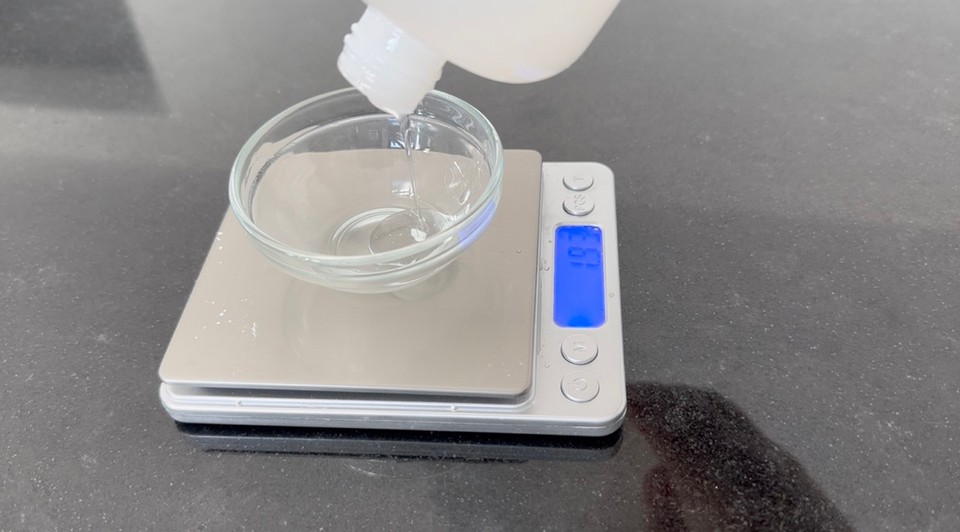


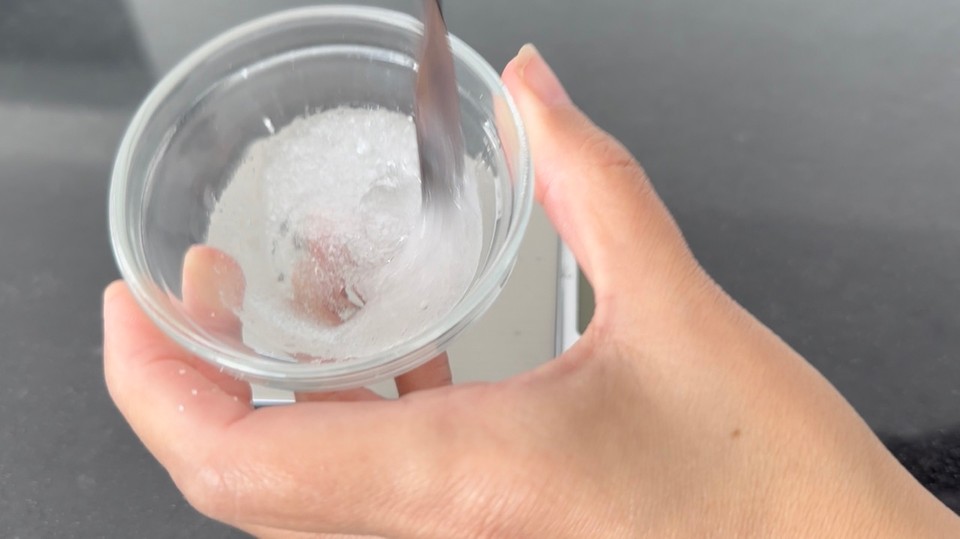
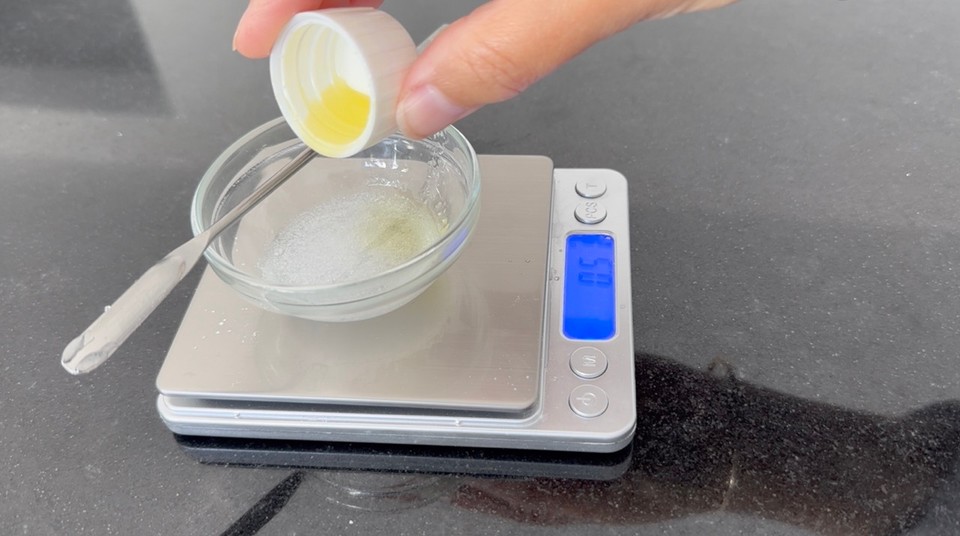
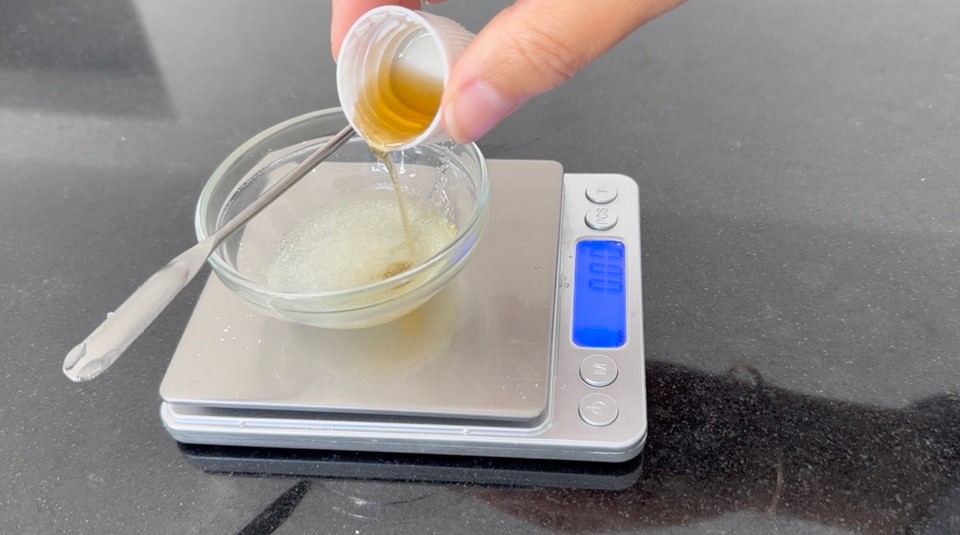
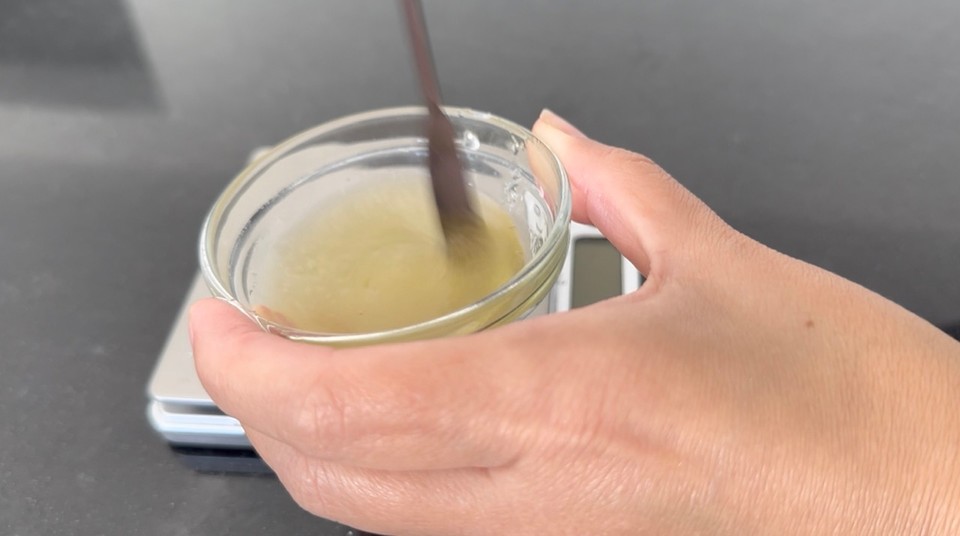
- Remove phases A, B and C from the heat after everything is dissolved (Phase A should be a jelly-like texture, phase C should be a paste consistency).
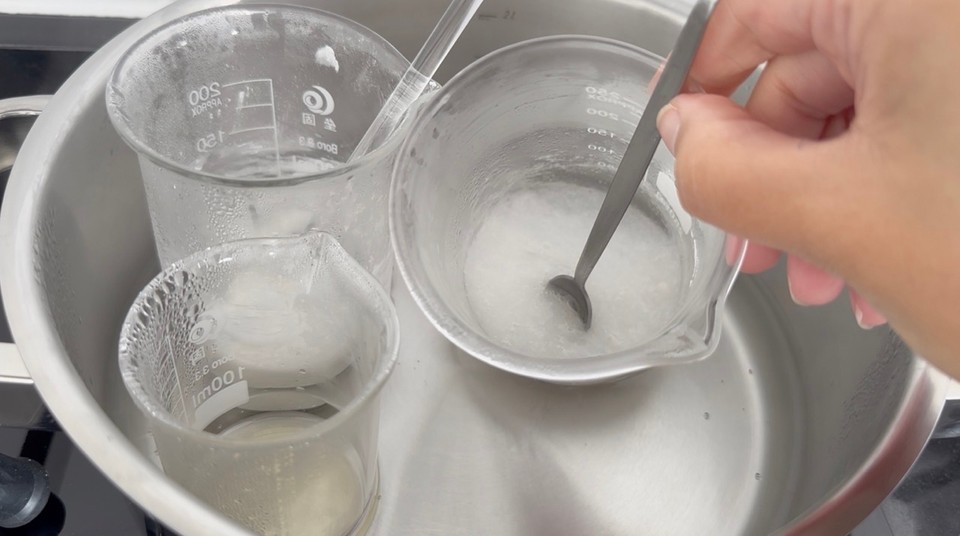
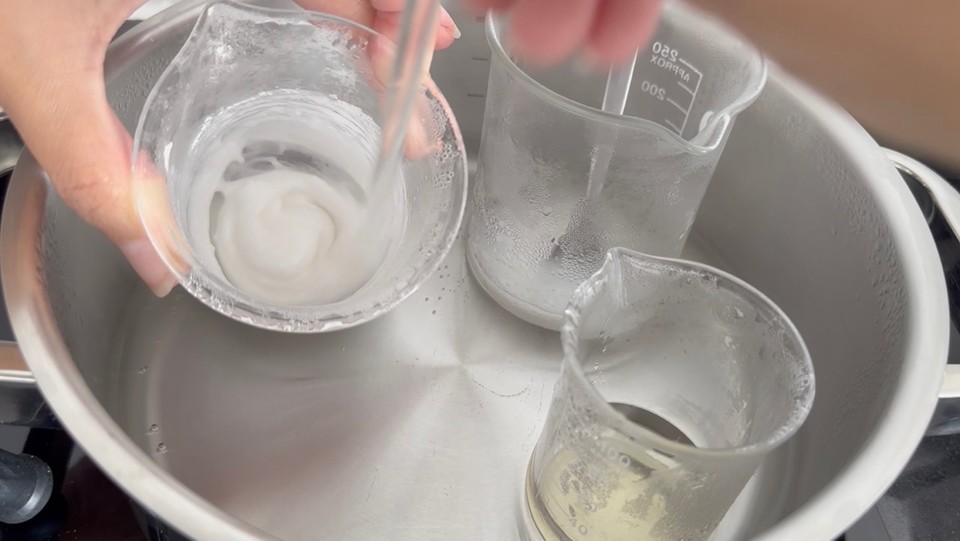
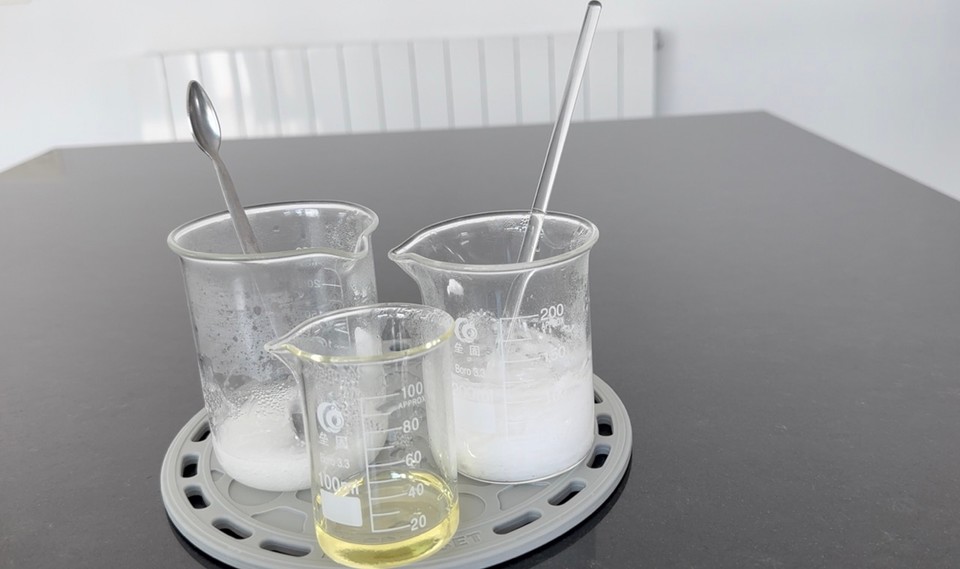
- Combine the water phase A and the oil phase C with an immersion blender for 4-6 minutes. If you want to add mica color add it before adding phase B. Once phases A and C are combined, add phase B and mix manually to combine.
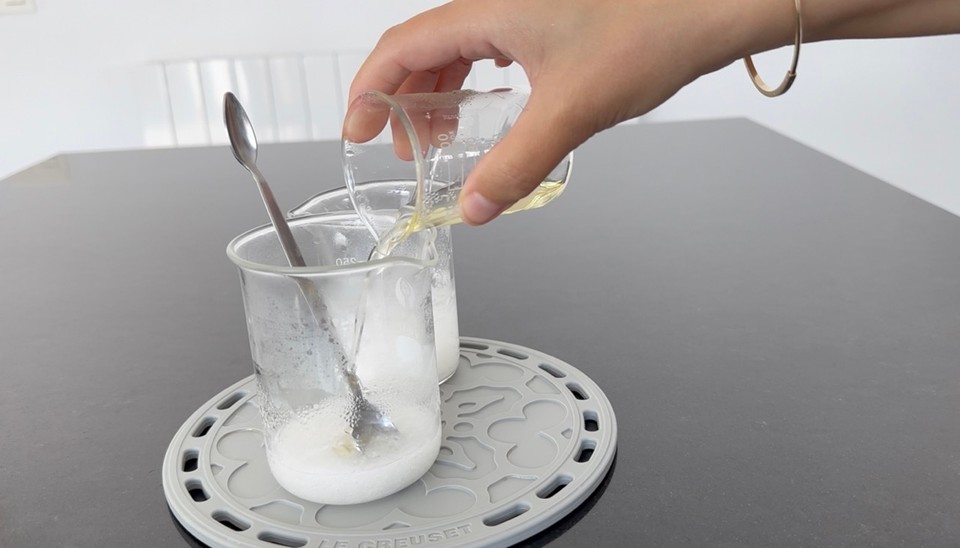
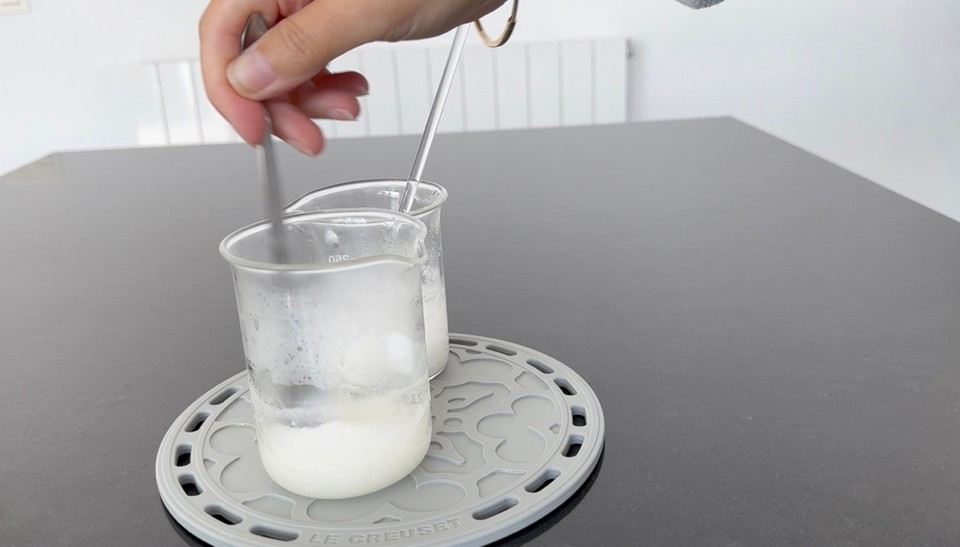
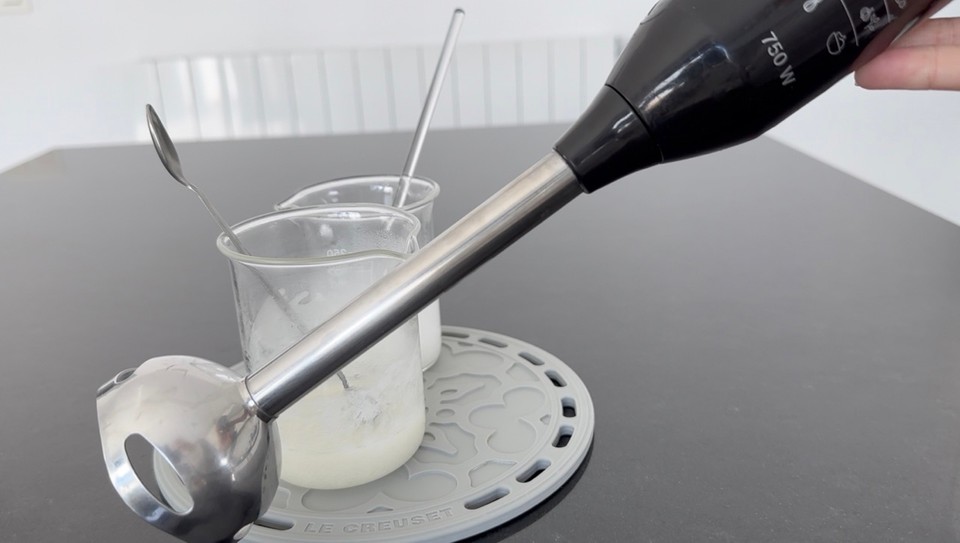
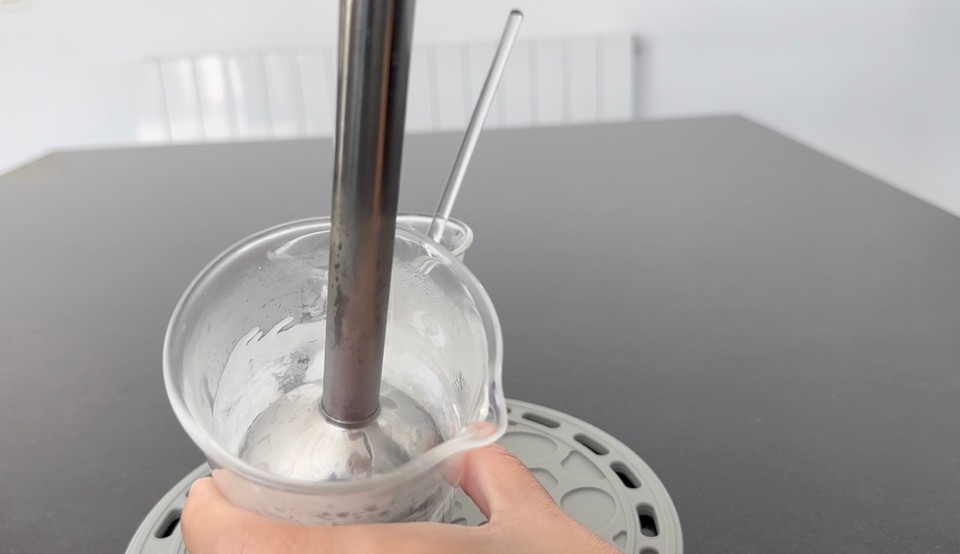
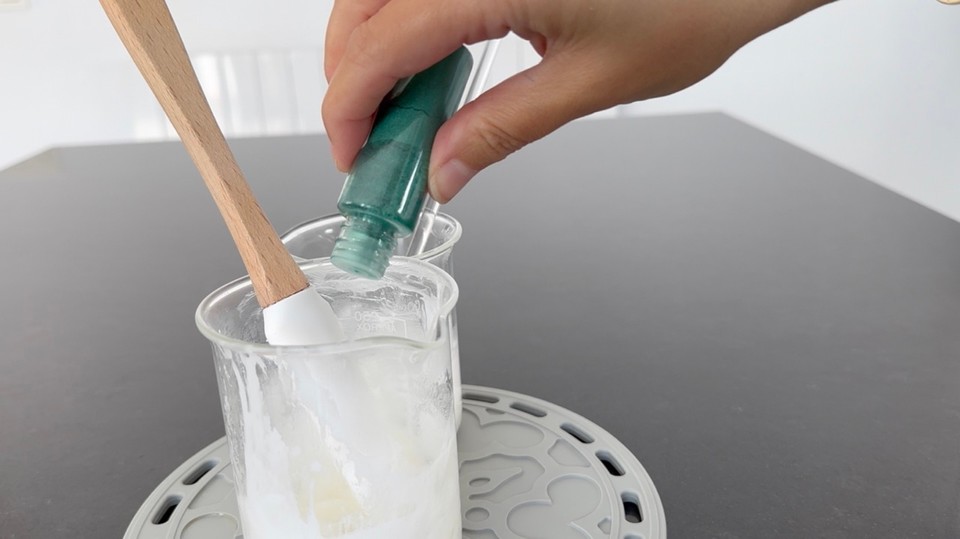
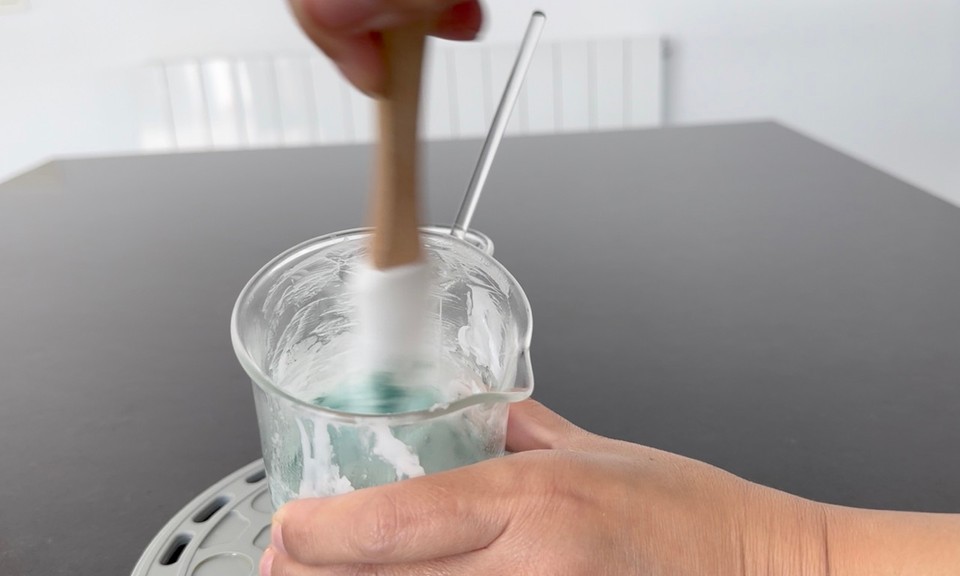
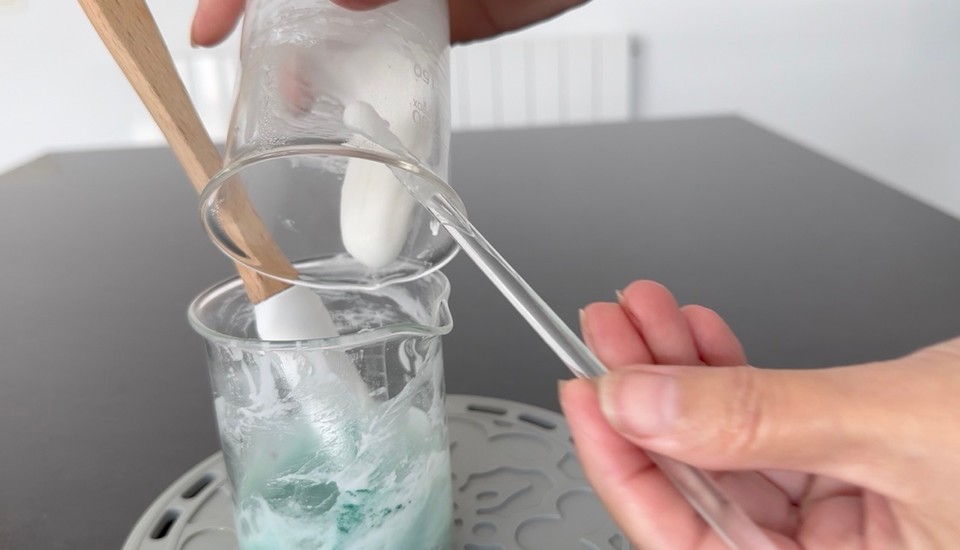

- Let the mixture cool down. Add phase D when the temperature is less than 40°C. Mix to combine.
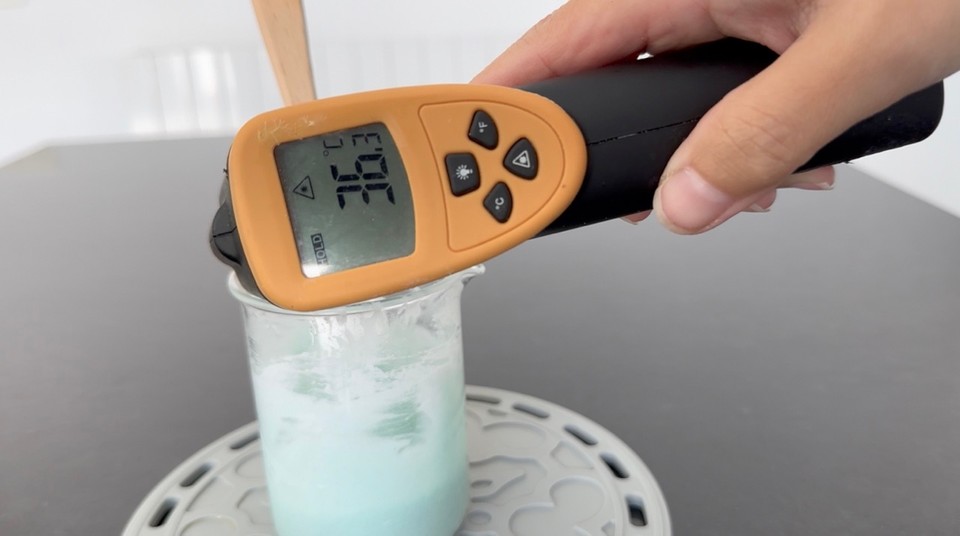

- Add phase E to the mixture. Mix to combine.
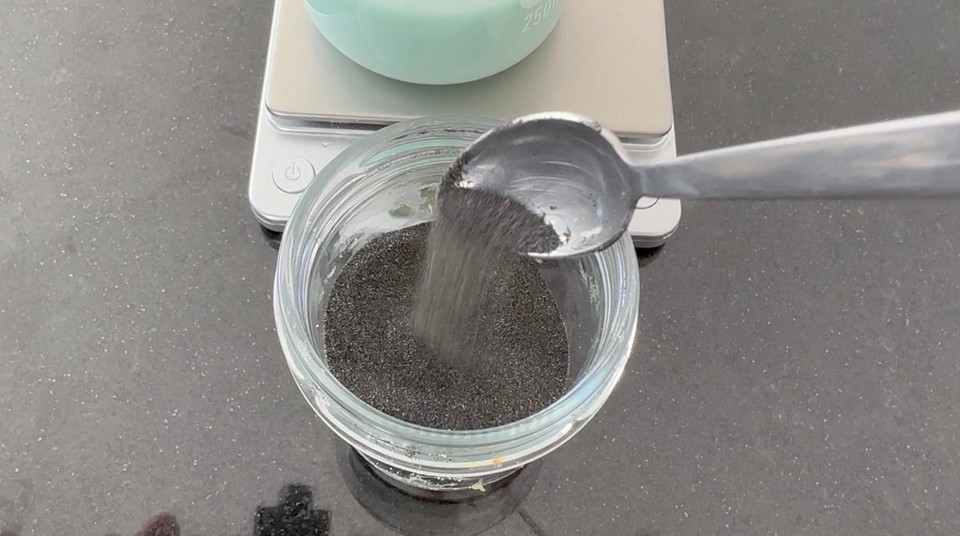
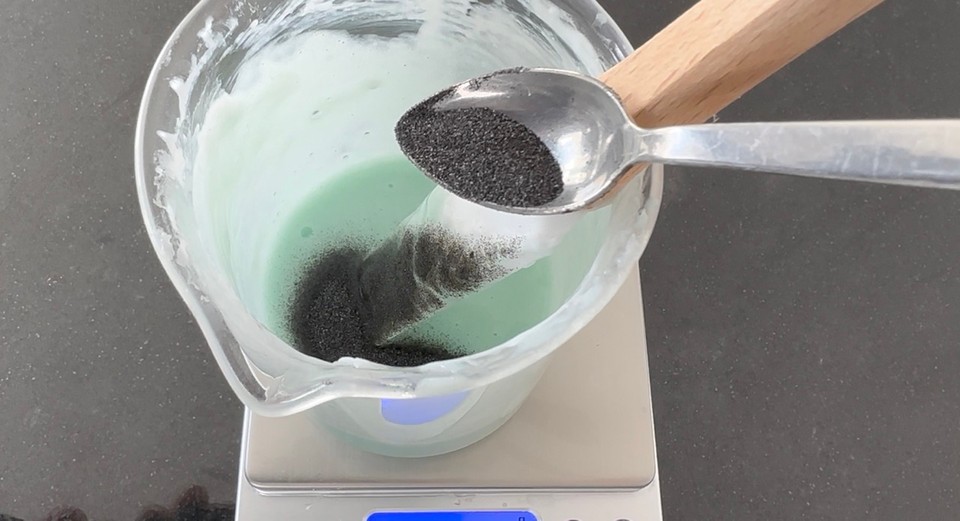
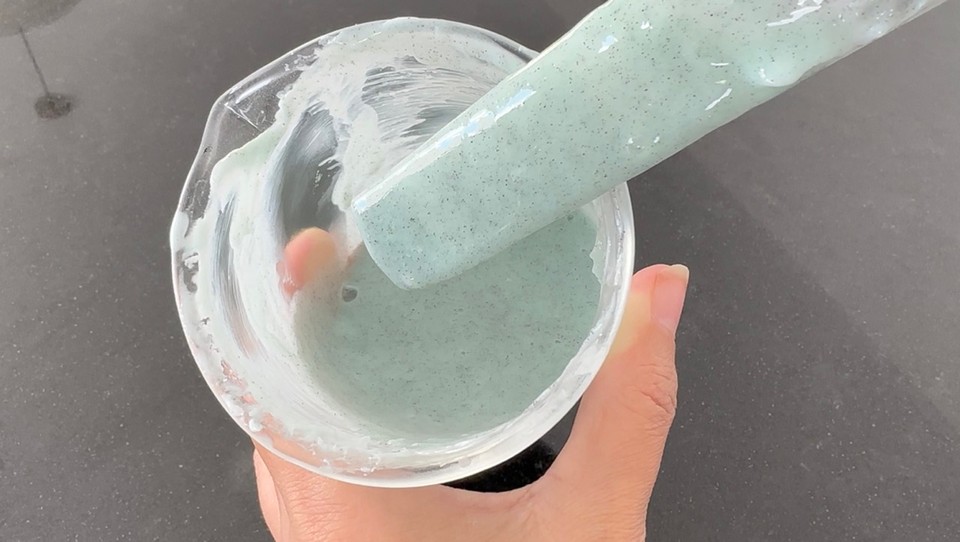
- Check and adjust the PH if necessary. Read here about PH adjustments in cosmetics. The PH of the final product should be between 5 to 6.
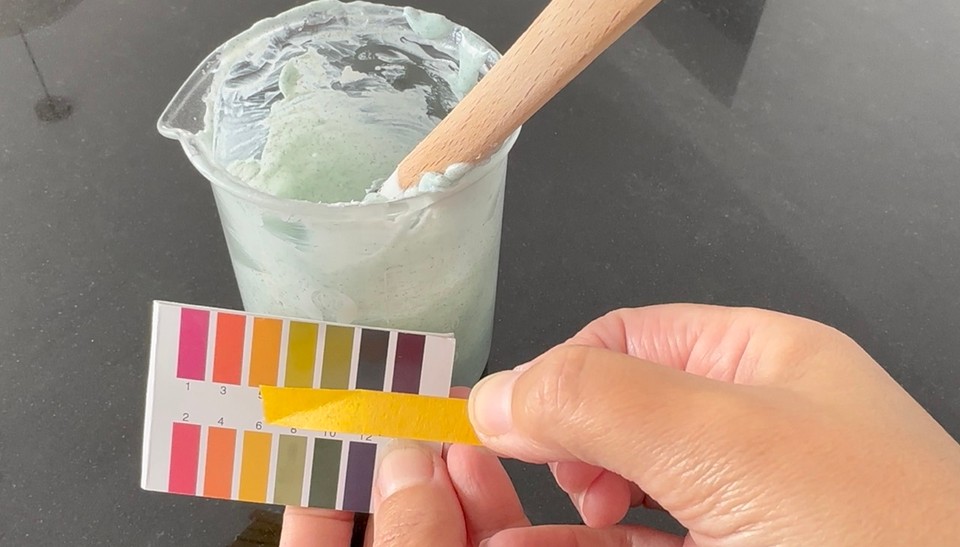
- Use a syringe to place the product in a tube container. Or place the product in a jar.
